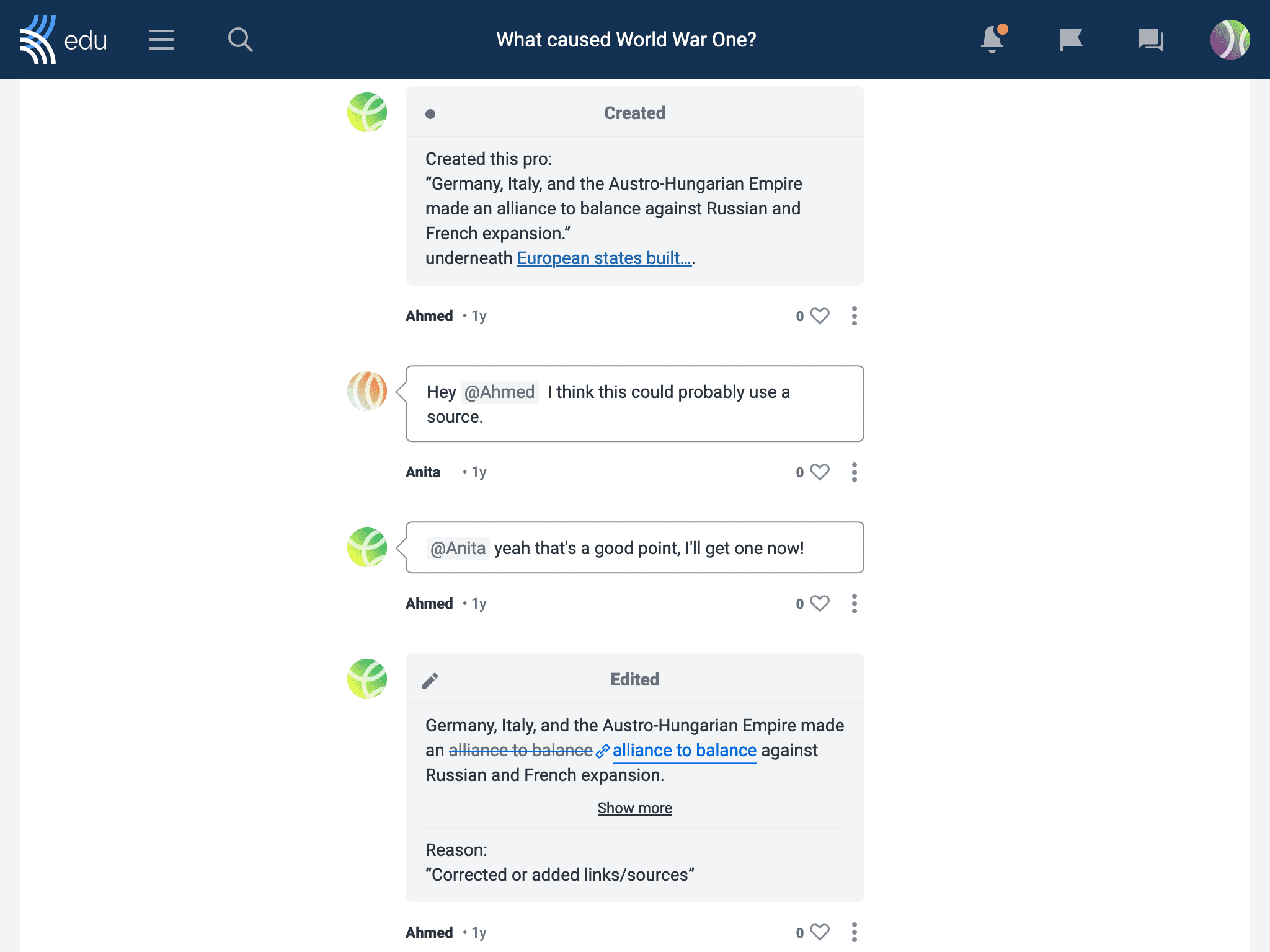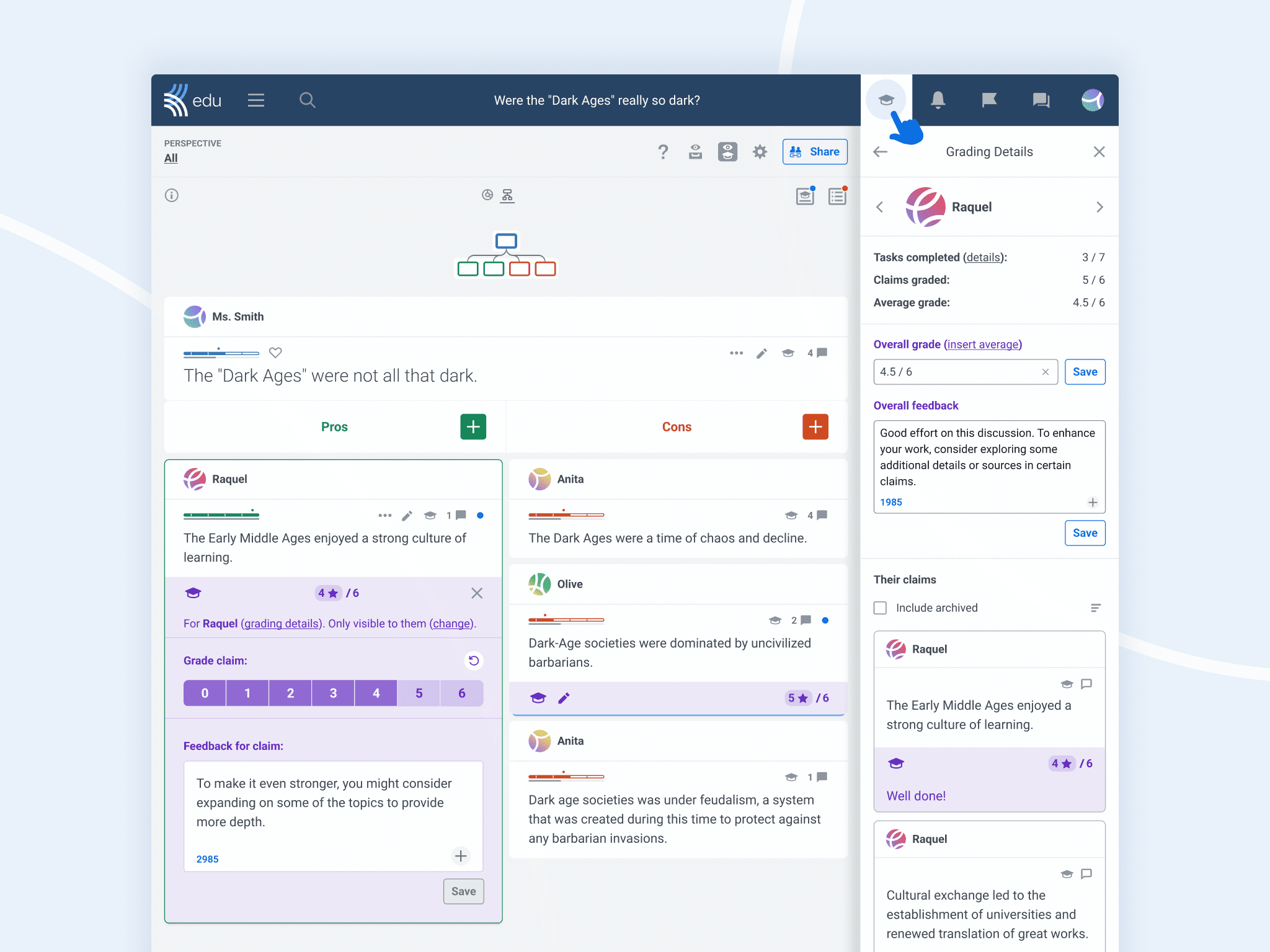In many classrooms today, it’s common to see small groups of students working together under the watchful eye of their teacher. And the reasons are clear! Student collaboration is not only engaging; it can also help students get to grips with the class content, all the while developing their critical thinking and problem-solving skills.
Kialo discussions are great for student collaboration, and an enriching way for them to explore different perspectives and build knowledge together. We’ve put together an overview of some options for using our discussions to support thoughtful collaboration in your classroom.
Why are Kialo discussions great for student collaboration?
Kialo discussions include a number of features to make student collaboration as smooth as possible. Whether working on a discussion together in class or at home, students can use the Discussion Chat and Comment features to organize their ideas, seek clarification, and make suggestions.

Not only that, teachers can also keep a close eye on their activity, ready to step in when they need a guiding hand using our Grading and Feedback feature.

4 ways to boost student collaboration with Kialo discussions
Below are some of our favorite activities that are great ways to boost student collaboration directly on Kialo Edu!
1. Collaborative knowledge-sharing of a learning topic
Have you tried using Kialo Edu to create an argument map of a learning topic? Knowledge sharing activities like these can get your students actively engaging with the class content as well as with each other.
By setting up a Kialo Edu discussion on your chosen topic, you can work with your students to build it gradually over the course of a project or term, making sure you cover everything that they need to know.
As students take on new content, ask them to decide together how best to summarize and add it to the discussion. Giving students a hand in constructing their own learning can support deeper learning. They’ll also have an easier time reviewing content when exam time comes round.
2. Peer teaching and learning of different topics
We all know it’s one thing to read about and understand a given topic, but it’s another thing entirely to explain it to someone else. Teaching peers definitely requires a certain level of confidence in your knowledge! Kialo Edu discussions give students a space to work through a learning topic and organize their ideas before explaining it to the class.
Teachers can put students in groups and set up unique Kialo Edu discussions so each group has something different to investigate. When each group feels confident they have explored their discussion in full, ask them to rehearse explaining their content before sharing their findings with their peers.
3. Jigsaw groups to explore the same topic
This sense of shared responsibility works just as well when student groups work off identical Kialo Edu discussions. Organize your groups so that the number of claims in the discussion matches the number of students, and task each student to explore an assigned claim. Then, regroup the students into “expert” groups that consist of the students tasked with the same claim.
Now, task each expert group to develop their assigned claim together. After the expert groups have finished developing their claim, students move back into their original groups and share what they’ve learned. They can then use their newly acquired knowledge to come to a consensus on whether they agree with the thesis.
4. Creating collaborative Kialo Edu discussions for peers

To go even further, put your students in charge of actually creating Kialo Edu discussions for their peers. In this way, students collaborate to construct and share knowledge in two different ways, and they also get the satisfaction of seeing their classmates engage with their creation.
Divide the class into small groups and give half the groups a discussion with thesis A, and the other half thesis B. If the class was studying environmental issues, for example, thesis A might be “Single-use plastics should be banned” and thesis B might be “Household recycling should be mandatory.” By the time your students have researched the topic, written the background info, added starter claims, sources and a cover image, they should be well up to speed on the topic!
When you’re satisfied with their developed discussion, have groups access another group’s discussion — which they can easily do with a QR code! All groups should now have a discussion with a different thesis than the one they developed. Students can then engage with their classmates’ ideas to explore the second thesis and populate the discussion with their ideas.
Watching students work together to achieve a common goal can be immensely rewarding. We hope Kialo Edu discussions can be a useful addition to your collaboration toolkit! These are just a few examples of what collaborative learning can look like on Kialo Edu. Connect with us on social media, or directly at feedback@kialo-edu.com, and tell us how you get your students collaborating in the classroom!

